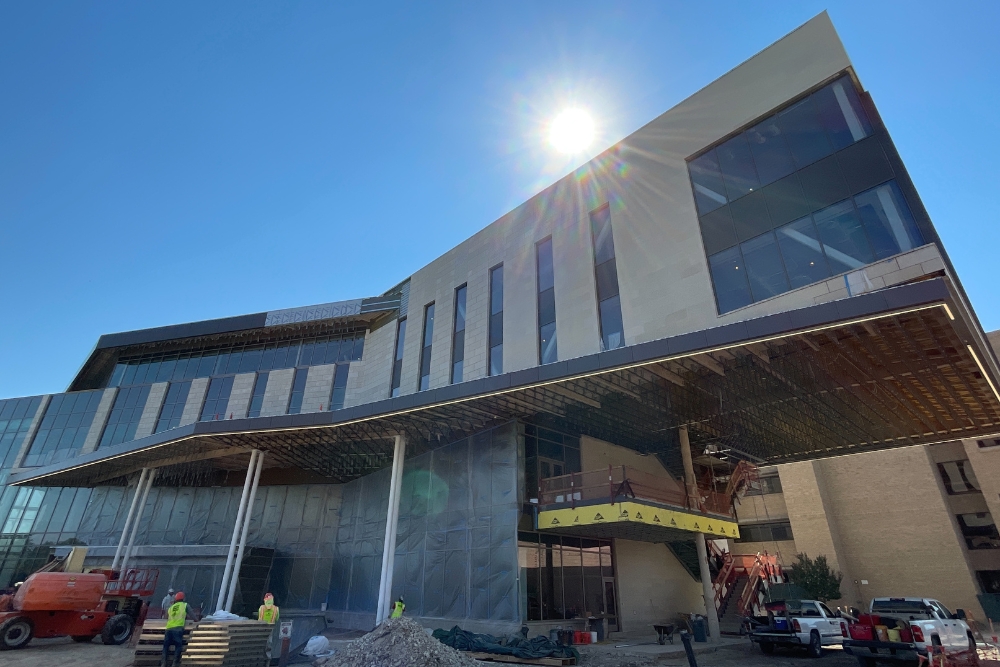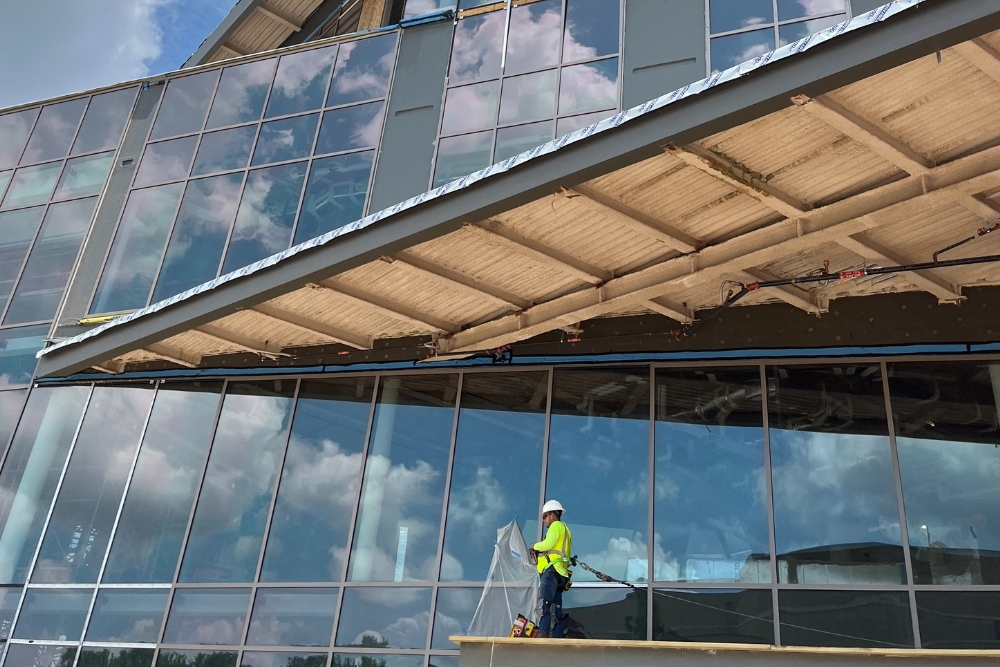Texas A&M University is expanding its renowned Mays Business School in College Station, Texas, and has teamed up with major construction and development firm Skanska to build the Wayne Roberts ’85 Building. Facilities Management Advisor spoke with Ben Johnson, senior project manager at Skanska, to learn interesting and unique details about the facility.

Named after a successful businessman and proud alumnus, the Wayne Roberts ’85 Building will serve as the gateway to the school’s new Business Education Complex, creating an innovative learning environment with collaborative spaces and some of the latest technology.
The partners broke ground on the four-story, 82,500 square-foot project in October 2022. Construction is slated for completion by year’s end, with the building opening in 2025. According to Mays Business School Dean Nate Sharp, the new state-of-the-art facility “will have an incredible impact on how we recruit, engage, and educate students.”
Quick Facts
Organization: Texas A&M University
Location: College Station, Texas
Type of project: New build
Square footage: 82,500 square feet
Estimated cost: $65.9 million (construction costs only)
Design-build team: Skanska and Kirksey Architecture
Status: Construction started October 2022
Expected completion: Late 2024 (open for use in 2025)
Executive Q&A
Skanska’s Johnson provided more details of the Wayne Roberts ’85 Building project in the following Q&A:
Are there any special architectural aspects/design elements worth noting?
The project, which will be the centerpiece of the new Business Education Complex, will offer the latest in technology, a grand atrium, café, flexible learning studios, and Collaboration Plaza. The grand atrium will seat up to 250 people for formal programs, and it can be reconfigured to host student events. Eight learning studios will be configured for flexibility to help students work in teams. The Collaboration Plaza is at the center of the Complex and provides space for meetings and team sessions in an outdoor setting.
What types of new or interesting technology will the facility include?
Skanska is providing the support and infrastructure for LG Electronics to install four video walls in the facility. Three video walls will be installed in the conference room. The second installation is noted as the largest video wall in Texas and the second largest in the United States. The larger of the two will be installed in the building’s atrium and will be directly visible from the outside of the building, serving as a main focal point following installation.
Other technology includes:
- Room schedulers: Each learning studio is equipped with a Crestron room scheduler mounted to the exterior mullion of the door. The room scheduler gathers all of the building’s rooms into one platform and provides availability information. The ability to make reservations and plan out the room’s needs in advance can all be done remotely.
- Sound control: All of the walls are designed with sound control devices including putty packs, acoustical caulking, and acoustical lagging. The corridor-facing walls were upgraded to a Maars double-glazed demountable glass partition with a sound rating of STC 45.
- Virtual learning: All rooms will be equipped with cameras, projectors, speakers, listening assist devices, microphones, etc., for virtual learning.
How might the facility specifically address the health and safety of occupants?
Overall, the space has been designed and constructed with the comfort, health, and well-being of its occupants in mind. A wellness room on Level 3 will provide occupants with a private, quiet space to focus on their health and well-being. The first floor will house a café that will provide grab-and-go nutrients for the building occupants, which is critical for faculty and staff who have busy schedules and cannot carve out time for lunch. Each floor will have huddle spaces and/or collaboration spaces where students can gather, lounge, and relax between class changes.

A panic button inside the building will allow occupants to silently call for emergency assistance in the event of an external threat. The exterior façade and window wall system have been designed to withstand heavy wind loads so the glass and façade will remain intact in the event of strong storms and, therefore, protect the occupants. Additionally, there is a fire lane designed around the entire building perimeter, which will give emergency services 360-degree access to the building in the event of an emergency.
What types of security features will the facility have?
The Business Education Complex gateway will feature standard safety features to ensure the safety of all occupants. Standard badging procedures will be set in place in addition to strategically placed security cameras throughout the facility.
Will the project incorporate sustainability initiatives or technology ?
Specific aspects of the building have been designed and constructed according to LEED standards; however, the project is not seeking LEED certification. Some of those standards include Construction Waste Management & Disposal and Construction Indoor Air Quality Management and Low Emitting Materials. These standards were adapted to the project for sustainability purposes and for building occupants.
Do you expect any design or build challenges, and if so, how might you overcome them?
Standard challenges will arise with projects of this scale, including drawing discrepancy, subcontractor coordination, and volatile lead-times, but the Skanska team has worked hard to mitigate these challenges by keeping open communication with the design team, owner, and subcontractors.

By establishing expectations and conveying information to all stakeholders, the Skanska team has been able to work through any issues and provide positive results. In addition to open communication, Skanska has pushed for early procurement of critical items with historically volatile lead-times and actively tracked items with an extreme lead time. This ensures materials will be on-site and ready for installation when needed.
Were initial project plans changed? If so, why?
The facility was originally designed to be an addition to the existing Wehner Building; however, early in the design phase, it was changed to be a standalone building. This was due to the location of the main telecom duct bank that services the entirety of the West Campus. The duct bank gives the building a unique triangular footprint with cantilevered ends. The cantilevers allowed the design team to maintain the square footage the university wanted without impacting the existing duct bank or adding additional floors.
Anything else you’d like to add about the project?
More details are available in this fly-through video:
Do you have a major project announcement you’d like considered for the “Under Construction” series? Please contact Editor Joe Bebon at JBebon@BLR.com.
